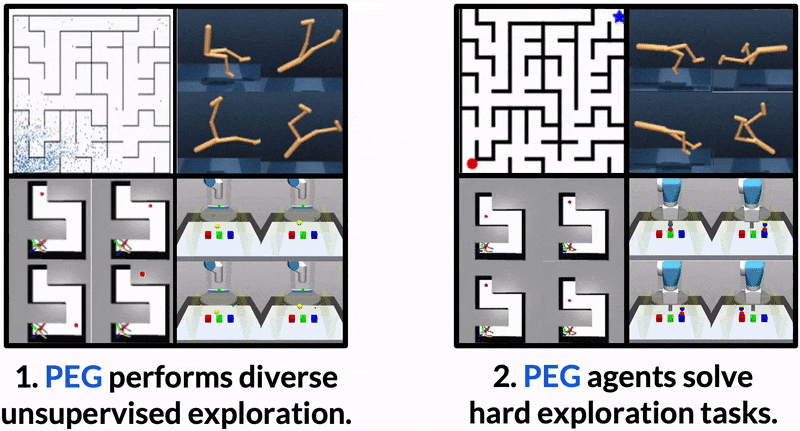Skew-Fit: State-Covering Self-Supervised Reinforcement Learning
Autonomous agents that must exhibit flexible and broad capabilities will need to be equipped with large repertoires of skills. Defining each skill with a manually-designed reward function limits this repertoire and imposes a manual engineering burden. Self-supervised agents that set their own goals can automate this process, but designing appropriate goal setting objectives can be difficult, and often involves heuristic design decisions. In this paper, we propose a formal exploration objective for goal-reaching policies that maximizes state coverage. We show that this objective is equivalent to maximizing goal reaching performance together with the entropy of the goal distribution, where goals correspond to full state observations. To instantiate this principle, we present an algorithm called Skew-Fit for learning a maximum-entropy goal distributions. We prove that, under regularity conditions, Skew-Fit converges to a uniform distribution over the set of valid states, even when we do not know this set beforehand. Our experiments show that combining Skew-Fit for learning goal distributions with existing goal-reaching methods outperforms a variety of prior methods on open-sourced visual goal-reaching tasks. Moreover, we demonstrate that Skew-Fit enables a real-world robot to learn to open a door, entirely from scratch, from pixels, and without any manually-designed reward function.
PDF Abstract ICML 2020 PDF

